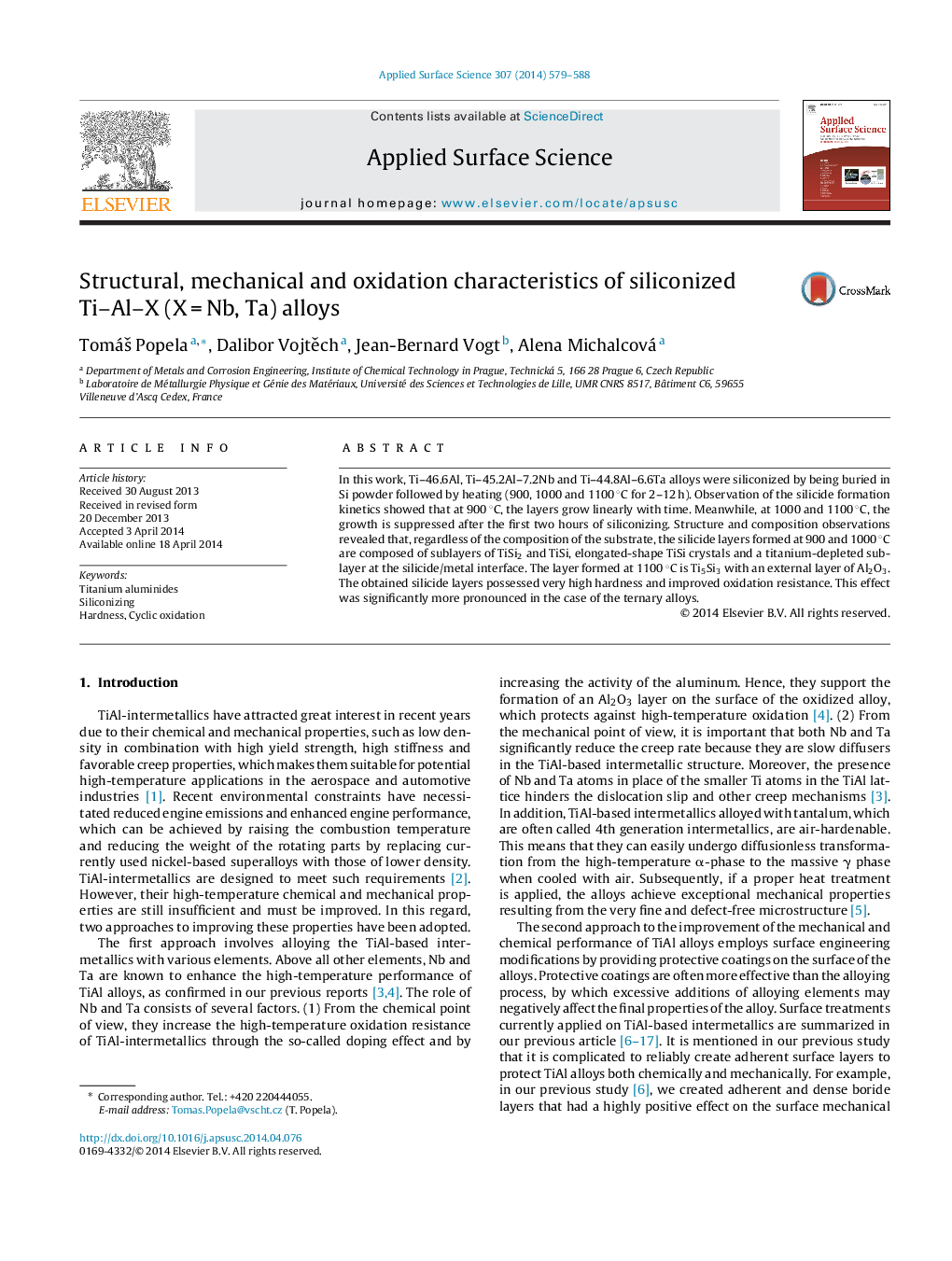| Article ID | Journal | Published Year | Pages | File Type |
|---|---|---|---|---|
| 5351391 | Applied Surface Science | 2014 | 10 Pages |
Abstract
In this work, Ti-46.6Al, Ti-45.2Al-7.2Nb and Ti-44.8Al-6.6Ta alloys were siliconized by being buried in Si powder followed by heating (900, 1000 and 1100 °C for 2-12 h). Observation of the silicide formation kinetics showed that at 900 °C, the layers grow linearly with time. Meanwhile, at 1000 and 1100 °C, the growth is suppressed after the first two hours of siliconizing. Structure and composition observations revealed that, regardless of the composition of the substrate, the silicide layers formed at 900 and 1000 °C are composed of sublayers of TiSi2 and TiSi, elongated-shape TiSi crystals and a titanium-depleted sublayer at the silicide/metal interface. The layer formed at 1100 °C is Ti5Si3 with an external layer of Al2O3. The obtained silicide layers possessed very high hardness and improved oxidation resistance. This effect was significantly more pronounced in the case of the ternary alloys.
Keywords
Related Topics
Physical Sciences and Engineering
Chemistry
Physical and Theoretical Chemistry
Authors
TomáÅ¡ Popela, Dalibor VojtÄch, Jean-Bernard Vogt, Alena Michalcová,
